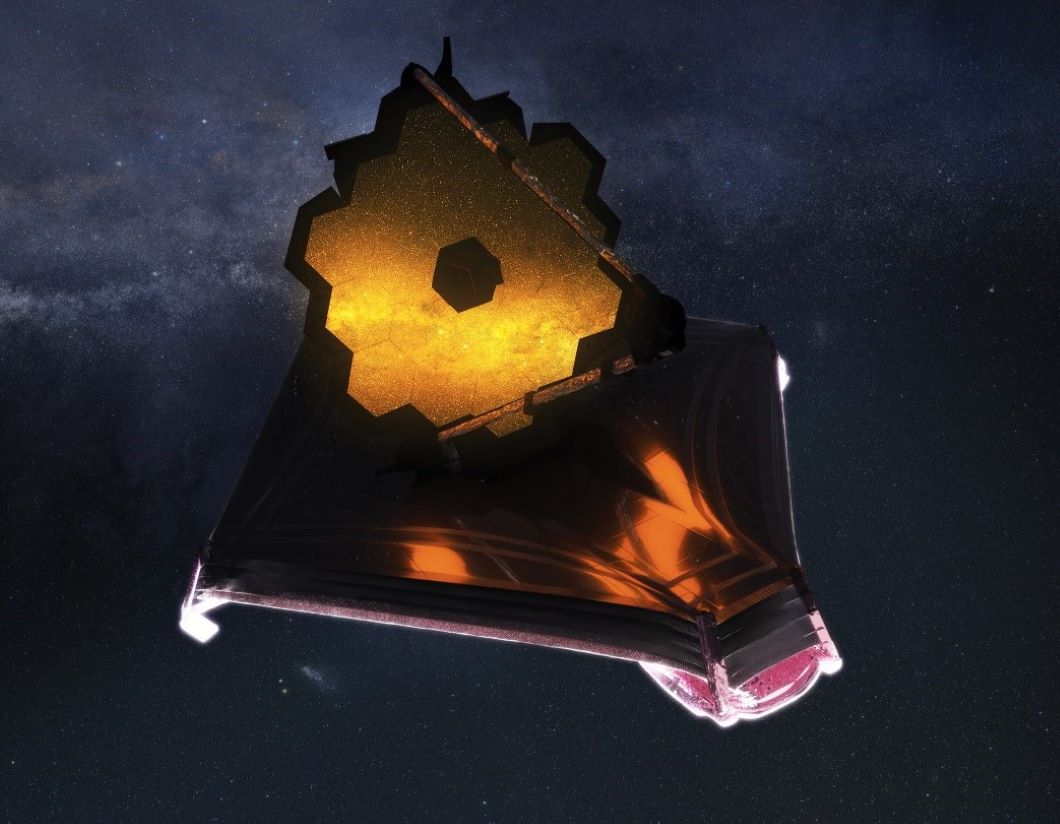Scientists and engineers operating NASA’s James Webb Space Telescope will answer questions about the mission’s latest milestones in a NASA Science Live broadcast at 3 p.m. EST Monday, Jan. 24, followed by a media teleconference at 4 p.m.
The broadcast will air live online on the NASA Science Live website, as well as YouTube, Facebook, and Twitter. Audio of the teleconference will stream live on the agency’s website.
Ground teams plan to fire Webb’s thrusters at 2 p.m. Monday, Jan. 24 to insert the space telescope into orbit around the Sun at the second Lagrange point, or L2, its intended destination, nearly 1 million miles from Earth. This mid-course correction burn has long been planned for approximately 29 days after launch. This week, the mission operations team selected the target date and time for the burn. Engineers also finished remotely moving Webb’s mirror segments out of their launch positions to begin the months-long process of aligning the telescope’s optics.
Viewers of this episode, “What’s Next for the James Webb Space Telescope?” can submit questions on social media using the hashtag #UnfoldtheUniverse or by leaving a comment in the chat section of the Facebook or YouTube stream. Questions from the public will be answered by:
- Amber Straughn, deputy project scientist for Webb communications, NASA’s Goddard Space Flight Center in Greenbelt, Maryland
- Scarlin Hernandez, flight systems engineer, Space Telescope Science Institute in Baltimore
Following the episode, NASA will host a media teleconference focused on the L2 insertion burn and mirror movements, as well as the next steps in preparing Webb to conduct science. The call will feature:
- Lee Feinberg, Webb optical telescope element manager, Goddard
- Amy Lo, Webb vehicle engineering lead, Northrop Grumman
- Keith Parrish, Webb observatory commissioning manager, Goddard
- Jane Rigby, Webb operations project scientist, Goddard
To participate in the teleconference, media must RSVP no later than two hours prior to the event to Laura Betz at: laura.e.betz@nasa.gov. NASA’s media accreditation policy for virtual activities is available online.
Webb, an international partnership with the ESA (European Space Agency) and the Canadian Space Agency, launched Dec. 25 from Europe’s Spaceport in Kourou, French Guiana. On Jan. 8, Webb finished unfolding in space after having been stowed inside the nose cone of an Arianespace Ariane 5 rocket for launch.
The observatory is now preparing for science operations, a human-controlled process called commissioning that provides the team with the flexibility to pause and adjust as needed. NASA provides regular updates about commissioning milestones on the Webb telescope blog. The public also can follow Webb’s progress online via a “Where is Webb?” interactive tracker.
Webb will explore every phase of cosmic history – from within the solar system to the most distant observable galaxies in the early universe, and everything in between. Webb will reveal new and unexpected discoveries and help humanity understand the origins of the universe and our place in it.
Additional Webb Resources:
- Digital media kit
- Image and video galleries
- Media interview request form
For more information about the Webb mission, visit:
-end-
Alise Fisher / Natasha Pinol
Headquarters, Washington
202-358-2546 / 202-358-0930
alise.m.fisher@nasa.gov / natasha.r.pinol@nasa.gov
Laura Betz
Goddard Space Flight Center, Greenbelt, Md.
301-286-9030
laura.e.betz@nasa.gov



























